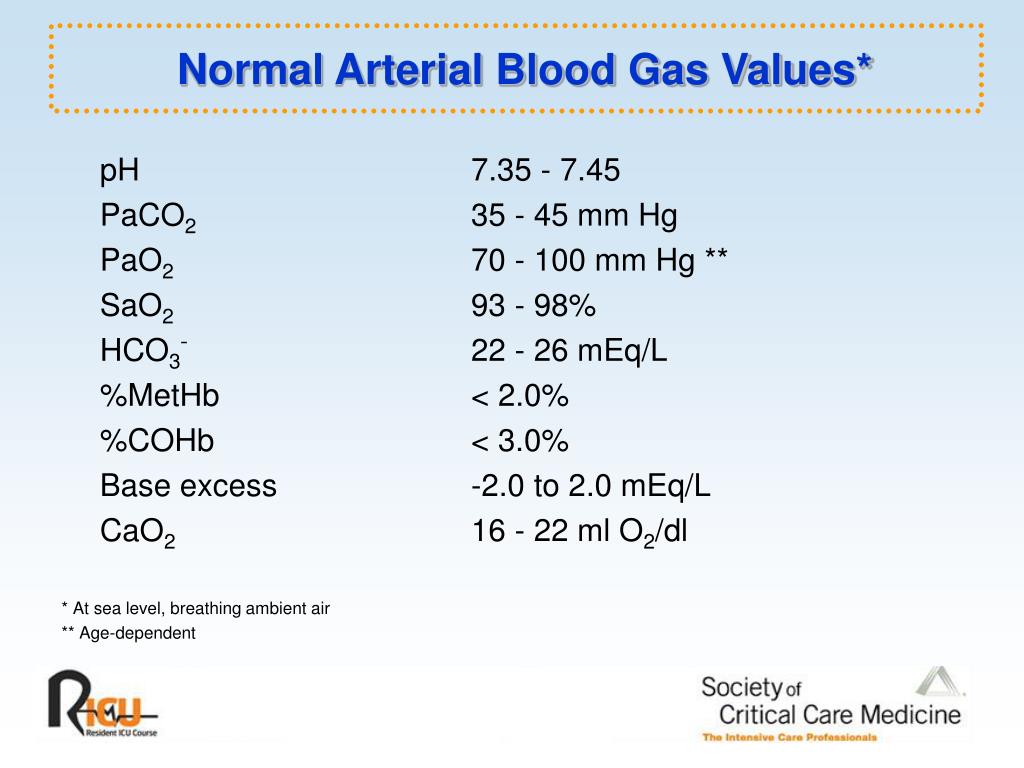Normal Venous Blood Gas

Normal venous blood gas (VBG) analysis is a crucial diagnostic tool in clinical practice, providing valuable information about a patient's oxygenation, ventilation, and acid-base balance. Venous blood gas analysis is often used in conjunction with arterial blood gas (ABG) analysis to provide a more comprehensive understanding of a patient's respiratory and metabolic status. In this article, we will delve into the world of normal venous blood gas values, exploring their significance, interpretation, and clinical applications.
Introduction to Venous Blood Gas Analysis

Venous blood gas analysis involves measuring the partial pressures of oxygen (pO2) and carbon dioxide (pCO2) in a venous blood sample, as well as the pH level. These measurements are essential in assessing a patient’s acid-base balance, oxygenation, and ventilation. Unlike arterial blood gas analysis, which requires an arterial puncture, venous blood gas analysis is a relatively non-invasive procedure, making it a more accessible diagnostic tool in certain clinical settings.
Normal Venous Blood Gas Values
The normal values for venous blood gas analysis are as follows:
| Parameter | Normal Value |
|---|---|
| pH | 7.35-7.45 |
| pO2 (mmHg) | 30-40 |
| pCO2 (mmHg) | 40-50 |
| Bicarbonate (mmol/L) | 22-28 |
| Base Excess (mmol/L) | -2 to +2 |

These values serve as a reference point for clinicians to interpret venous blood gas results and make informed decisions about patient care. It is essential to note that normal values may vary slightly depending on the laboratory and the specific analytical techniques used.
Clinical Applications of Venous Blood Gas Analysis

Venous blood gas analysis has numerous clinical applications, including monitoring patients with respiratory or cardiac disease, assessing the effectiveness of oxygen therapy, and evaluating the severity of acid-base disturbances. In critically ill patients, venous blood gas analysis can help guide fluid and electrolyte management, as well as inform decisions about mechanical ventilation and other life-supporting therapies.
Interpretation of Venous Blood Gas Results
Interpreting venous blood gas results requires a thorough understanding of acid-base physiology and the underlying clinical context. Clinicians must consider the patient’s medical history, physical examination findings, and other laboratory results when interpreting venous blood gas data. For example, a patient with a low venous pO2 may require supplemental oxygen therapy, while a patient with an elevated venous pCO2 may benefit from adjustments to their ventilatory support.
Comparison with Arterial Blood Gas Analysis
Arterial blood gas analysis is generally considered the gold standard for assessing a patient’s respiratory and acid-base status. However, venous blood gas analysis has several advantages, including reduced invasiveness and lower risk of complications. The following table highlights the key differences between arterial and venous blood gas analysis:
| Parameter | Arterial Blood Gas | Venous Blood Gas |
|---|---|---|
| pH | 7.35-7.45 | 7.35-7.45 |
| pO2 (mmHg) | 75-100 | 30-40 |
| pCO2 (mmHg) | 35-45 | 40-50 |
| Bicarbonate (mmol/L) | 22-28 | 22-28 |
| Base Excess (mmol/L) | -2 to +2 | -2 to +2 |
While arterial blood gas analysis provides a more accurate assessment of a patient’s oxygenation and ventilation, venous blood gas analysis can still offer valuable insights into a patient’s acid-base balance and overall clinical status.
What is the primary advantage of venous blood gas analysis over arterial blood gas analysis?
+The primary advantage of venous blood gas analysis is its reduced invasiveness and lower risk of complications compared to arterial blood gas analysis.
How do normal venous blood gas values differ from normal arterial blood gas values?
+Normal venous blood gas values differ from normal arterial blood gas values in terms of pO2 and pCO2 levels. Venous pO2 is typically lower than arterial pO2, while venous pCO2 is typically higher than arterial pCO2.
What are some common clinical applications of venous blood gas analysis?
+Venous blood gas analysis has numerous clinical applications, including monitoring patients with respiratory or cardiac disease, assessing the effectiveness of oxygen therapy, and evaluating the severity of acid-base disturbances.



